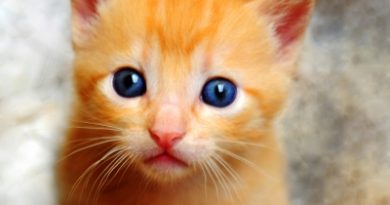Top Feeding Tips From Cat Owners

"Mealtime should be a great human-to-cat interaction," she says. It offers you the chance to spend quality time with your cat and to create a cherished routine. The following tips and stories from cat owners can help you make feeding time special for everyone.
Maintain a Schedule
Andersen sticks to a regular mealtime schedule with her cats. "This way, pets know when to expect their food, and it keeps them from begging at other times," Andersen explains. Your cat should also learn to wait patiently for its food. "You should be able to take the food away without incident."
Talk to Your Cat
No matter how eager you are to begin your daily routine – or hop into bed after a hectic day – don’t miss out on the chance to interact with your cat. When cat owner Angela Megasko adopted her orange tabby, Robert, he was was just a "skin and bones" stray. Now, Robert weighs 15 pounds and is lavished with attention at mealtime.
"Our morning routine consists of fresh water and dry food, and it always starts with the same question: ‘Who wants breakfast?’" says Megasko. "The meows and rubs commence. Evenings are wet food, along with a similar question.’"
Introducing both wet and dry food may make it easier to hide medicine in wet morsels if necessary, notes Megasko.
Spread out Meals
Scheduling meals throughout the day and limiting snacking has helped make Kelly Williams’ cats, Jackson, Elliot and Scooby, healthier. "We just recently switched to feeding them on a schedule and picking up the leftovers to prevent them from overindulging all day long," says Williams. "It has cut down on the amount of vomit and hairballs, and our obese cat lost 3 pounds."
Morning begins with a hearty scratch behind the ears for the trio, then breakfast with Williams or her father. Williams’ husband sits on the floor with the kitties as the cats eat lunch. "They get a small dinner around the same time we eat dinner to keep them from trying to eat ours," says Williams. "Before bed, they get just a tiny bit more to keep them out of our bed at night crying, ‘I’m hungry.’"
Create Feeding Stations for Each Cat
Dr. Deb Givin, a Portland, Maine, veterinarian with a cats-only practice, makes sure Bradlee, age 10, and kittens Walter and William have their own personal feeding areas. "Visual separation is important in multi-cat households," says Givin. This also helps you become aware of each cat’s appetite, which is important in spotting illnesses early.
When you feed your kitty, Givin believes, you sometimes have to balance conflicting needs. For members of the cat species in the wild, hunting and eating are solitary activities. For people, providing food is an act of love, and mealtimes are seen as social events. It takes planning to mesh the two, says Givin.
She feeds wet food to her cats, and then she uses dry food in foraging toys to give them the experience of "hunting" for food. "Put a portion in a foraging toy to amuse your cat while you are at work," advises Givin. "Hide a cache of dry food around the house so your kitty can ‘hunt.’"
Use dry food as a treat to reward good behavior – you can try this after trimming your cat’s claws or grooming its coat. A regular snack of dry food in a cat carrier can also create a positive association, Givin says. "A pile of dry kibble in a bowl is boring and may be like an open bag of chips for some cats," she cautions.
Spending time with your cat before a meal can lead to a better eating experience, since it mimics the hunt leading up to a meal in the wild. "Make mealtimes an event," says Givin. "Interaction at mealtime is fun."













